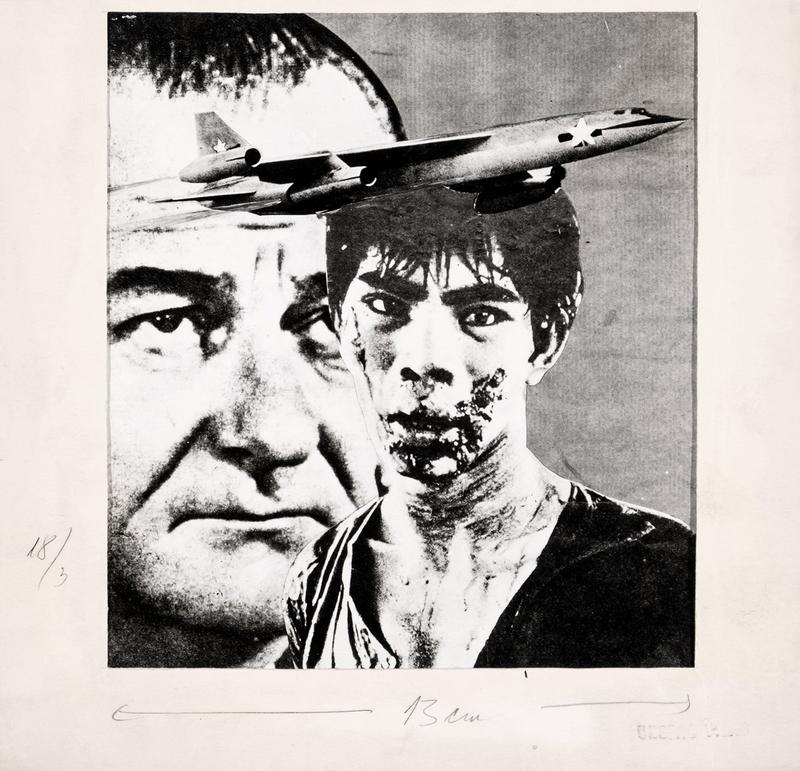This essay uncovers the early revival of John Heartfield’s radical montage technique in the late 1950s and the impact his radical montages from the 1930s had on the documentary practices of the Hungarian conceptual artists László Lakner and Miklós Erdély, as well as the East German conceptual artist Klaus Staeck. These three artists transformed Heartfield’s technique as they responded to the Vietnam war. They pushed Heartfield’s technique toward more complex modalities of the composite image, in the forms of ‘historical pop painting’ (a realist technique), ‘creative thinking’ (a political and meta-photographic analysis of humanity), and an ‘intermedia’ method. These politically oriented artists, together with an anti-war student movement, developed a diverse and networked culture of dissent in the 1960s and beyond.

Frigyes Porscht, sans titre, s. d., photomontage original, 20,3 x 18,2 cm. Budapest, Vintage Galéria.
Cristina Cuevas-Wolf is an art historian and a visiting scholar at the Max Kade Institute for Austrian-German-Swiss Studies at the University of Southern California (USC). Her most recent publications include: ‘The Montage Connection between John Heartfield and László Lakner. Artistic Resistance and a New Leftism in Sixties Europe’, Oxford Handbook of Communist Visual Cultures (2020) and the co-edited volume Promote, Tolerate, Ban. Art and Culture in Cold War Hungary (2018).
Keywords: John Heartfield, documentary practices, Vietnam War, student movements, László Lakner, Miklós Erdély, Klaus Staeck, Gábor Altorjay, Guillermo Deisler
Citation: Cristina Cuevas-Wolf, « John Heartfield et le photomontage politique dans les années 1960 et au-delà », Transbordeur. Photographie histoire société, no. 7, 2023, pp. 50-61.